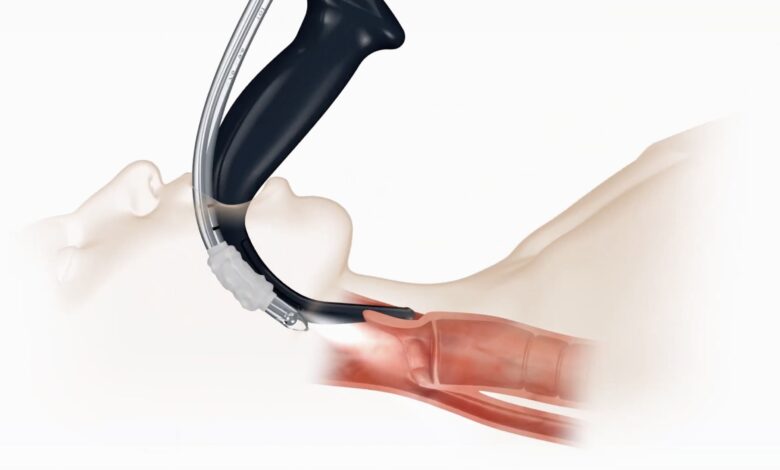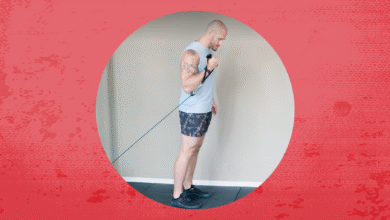Use of Video Laryngoscopy Reduced Endotracheal Intubation Attempts

— Video laryngoscopy also led to fewer intubation failures, injuries versus direct laryngoscopy
by
Elizabeth Short, Staff Writer, MedPage Today
March 18, 2024
Use of hyperangulated video laryngoscopy reduced the number of attempts needed to achieve endotracheal intubation compared with direct laryngoscopy among adults undergoing elective or emergent surgical procedures, a cluster randomized trial showed.
At a single academic hospital, more than one intubation attempt was required in 1.7% of the procedures in which video laryngoscopy was used compared with 7.6% of procedures in which direct laryngoscopy was used, with an estimated proportional odds ratio for the number of intubation attempts of 0.20 (95% CI 0.14-0.28, P<0.001), reported Kurt Ruetzler, MD, of the Cleveland Clinic, and co-authors.
Intubation failure — defined by either the clinician switching to an alternative laryngoscopy device for any reason at any time or by more than three intubation attempts — occurred in 0.27% of the surgical procedures using video laryngoscopy versus 4% of those utilizing direct laryngoscopy (relative risk 0.06, 95% CI 0.03-0.14, P<0.001), they noted in JAMA.
There were no significant differences between video and direct laryngoscopy for airway injuries, defined as any bleeding or apparent injury to the lips, mouth, pharynx, vocal cords, or other airway structures as recorded by the anesthesia team, and dental injuries, defined as an injury to the teeth as recorded by the anesthesia team (0.93% vs 1.1%, respectively).
“The observed improvement with video laryngoscopy may be clinically important, as several large observation studies and randomized trials reported that multiple intubation attempts promote complications including aspiration, hypoxemia, airway injury, and even death,” the authors wrote.
Ruetzler and colleagues noted that it can be difficult to visualize the glottis and vocal cords with direct laryngoscopy, and video laryngoscopy, which was introduced in 2001, may improve visualization of airways but is sometimes linked to prolonged and failed intubation attempts, leaving the actual impact of video laryngoscopy on easing intubation “unclear.”
For this study, the researchers included 8,429 elective or emergent cardiac, thoracic, or vascular surgical procedures from March 2021 through December 2022 among 7,736 adult patients who required single-lumen endotracheal intubation for general anesthesia. Median age was 66, 35% were women, and 85% underwent elective surgical procedures.
Among the procedures, cardiac surgery was the most common, followed by vascular surgery, other surgeries, and thoracic surgery.
Two sets of 11 operating rooms were randomized on a 1-week basis to perform hyperangulated video laryngoscopy or direct laryngoscopy for the initial intubation attempt.
Clinicians were given the opportunity to view an instructional video on the correct usage of the hyperangulated trial video laryngoscope, as well as time to practice and trial on manikins prior to the procedure. All of the attending anesthesiologists and nurse anesthetists were required to use the hyperangulated video laryngoscope for each intubation procedure for 2 weeks prior to trial enrollment, and were allowed to use any form of general anesthesia during the procedure.
Intubation was attempted with an appropriately sized single-lumen endotracheal tube, usually 7.5 to 8 mm in size. For patients in the direct laryngoscopy group, stylets were used per clinical preference. For patients in the video laryngoscopy group, endotracheal tubes were equipped with stylets. Minor external airway manipulations such as the backward, upward, rightward, pressure applied to the larynx maneuver, head elevation, and pressure applied to the cricoid cartilage were allowed to improve visualization.
Ruetzler and colleagues noted that the single-center design of their study may limit the applicability of the results to other institutions. Other potential limitations to the study included the lack of standardization for determination of adequate neuromuscular block, the fact that patient positioning was not protocolized, and possible selection bias as a result of certain exclusion criteria.
-
![author['full_name']](https://clf1.medpagetoday.com/media/images/author/EShort_188.jpg)
Elizabeth Short is a staff writer for MedPage Today. She often covers pulmonology and allergy & immunology. Follow
Disclosures
The GlideScope video laryngoscopes and GlideRite stylets were provided by Verathon.
The study authors reported no conflicts of interest.
Primary Source
JAMA
Source Reference: Ruetzler K, et al “Video laryngoscopy vs direct laryngoscopy for endotracheal intubation in the operating room: a cluster randomized clinical trial” JAMA 2024; DOI: 10.1001/jama.2024.0762.



